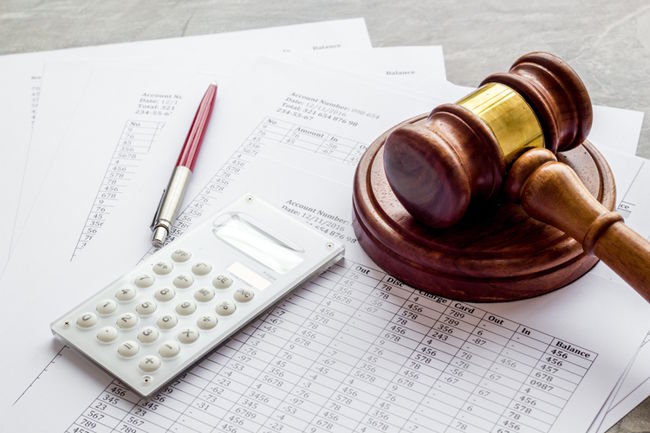If you’re overwhelmed by debt and consider bankruptcy, you’ve likely heard of Chapter 7 and Chapter 13, but what’s the difference? Choosing the right one can make or break your financial fresh start. At Monohan & Monohan, we’ve helped countless Kentucky & Ohio residence navigate bankruptcy, and we’re here to break it down in plain English. Let’s dive into the key differences between Chapter 7 and Chapter 13, so you can figure out which option fits your situation!
Bankruptcy Basics: Chapter 7 vs. Chapter 13
Bankruptcy is a legal process to help you manage or eliminate debt, and Chapter 7 and Chapter 13 are the most common types for individuals.
They work differently based on your income, assets, and goals:
- Chapter 7 (Liquidation): Wipes out most unsecured debts (like credit cards or medical bills) by selling non-exempt assets. It’s quick but requires low income.
- Chapter 13 (Repayment Plan): Reorganizes debts into a 3- to 5-year payment plan, letting you keep assets while paying back some debt. It’s ideal for those with steady income.
Let’s compare them across key factors to see which might work for you.
| CATEGORY | CHAPTER 7 | CHAPTER 13 |
|---|---|---|
| Type | Liquidation: Wipes out unsecured debts by selling non-exempt assets. | Repayment Plan: Reorganizes debts into a 3-5 year payment plan. |
| Process | Trustee sells non-exempt assets; debts discharged in 4-6 months. | Pay creditors via a court-approved plan; keep assets. |
| Eligibility | Must pass means test (low income, below KY median: ~$59,360 for 1 person). | Steady income: debts under $465,275 (unsecured), $1,395,875 (secured). |
| Asset Impact | Non-exempt assets may be sold; KY homestead exemption ($46,350) protects home equity. | Keep all assets; pay non-exempt value through plan. |
| Time & Cost | 4-6 months; $1,500-$4,000 (incl. $338 filing fee). | 3-5 years; $3,000-$6,000 (fees often paid via plan). |
| Credit Impact | On credit report for 10 years; 100-200 point score drop. | On credit report for 7 years; slightly less severe drop. |
Bankruptcy Basics: Chapter 7 vs. Chapter 13
Bankruptcy is a legal process to help you manage or eliminate debt, and Chapter 7 and Chapter 13 are the most common types for individuals.
They work differently based on your income, assets, and goals:
- Chapter 7 (Liquidation): Wipes out most unsecured debts (like credit cards or medical bills) by selling non-exempt assets. It’s quick but requires low income.
- Chapter 13 (Repayment Plan): Reorganizes debts into a 3- to 5-year payment plan, letting you keep assets while paying back some debt. It’s ideal for those with steady income.
Let’s compare them across key factors to see which might work for you.
Bankruptcy Basics: Chapter 7 vs. Chapter 13
Bankruptcy is a legal process to help you manage or eliminate debt, and Chapter 7 and Chapter 13 are the most common types for individuals.
They work differently based on your income, assets, and goals:
- Chapter 7 (Liquidation): Wipes out most unsecured debts (like credit cards or medical bills) by selling non-exempt assets. It’s quick but requires low income.
- Chapter 13 (Repayment Plan): Reorganizes debts into a 3- to 5-year payment plan, letting you keep assets while paying back some debt. It’s ideal for those with steady income.
Let’s compare them across key factors to see which might work for you.
Chapter 7 Bankruptcy
- Liquidation: Wipes out unsecured debts by selling non-exempt assets.
- Trustee sells non-exempt assets; debts discharged in 4–6 months.
- Must pass means test (low income, below KY median: ~$59,360 for 1 person).
- Non-exempt assets may be sold; KY homestead exemption ($46,350) protects home equity.
- Faster: 4–6 months; costs typically $1,500–$4,000 (including $338 filing fee).
- Credit report impact: 10 years; 100–200 point score drop.
Chapter 13 Bankruptcy
- Repayment Plan: Reorganizes debts into a 3–5 year payment plan.
- Pay creditors via a court-approved plan while keeping all assets.
- Requires steady income; unsecured debts under $465,275, secured under $1,395,875.
- Keep all assets; pay non-exempt value through your plan.
- Slower: 3–5 years; attorney fees often $3,000–$6,000 (paid through plan).
- Credit report impact: 7 years; slightly smaller score drop than Chapter 7.
How They Work
Each chapter has a unique process for handling debt:
Chapter 7:
- A bankruptcy trustee sells non-exempt assets (e.g., valuable property not protected by exemptions) to pay creditors.
- Most unsecured debts are discharged (eliminated) in 4-6 months.
- Example: If you owe $20,000 in credit card debt and qualify, Chapter 7 can wipe it out without payments.
Chapter 13:
- You propose a repayment plan to pay creditors over 3-5 years, based on your income and expenses.
- You keep all your assets, even non-exempt ones, as long as you stick to the plan.
- Example: If you’re behind on your mortgage, Chapter 13 lets you catch up through the plan while keeping your home.

Eligibility Requirements
Not everyone qualifies for both chapters. Here’s who can file:
Chapter 7:
- Must pass the means test, which compares your income to Kentucky’s median income (e.g., $59,360 for a single person in 2025). If your income is too high, you may not qualify.
- BEST FOR: Low-income individuals with mostly unsecured debts and few valuable assets.
Chapter 13:
- Requires regular income to fund a repayment plan. Your unsecured debts must be under $465,275, and secured debts under $1,395,875 (2025 limits, adjusted periodically).
- BEST FOR: People with steady income who want to keep assets like a home or car.
Pro Tip: A bankruptcy attorney can run the means test and assess your income to determine eligibility.
Impact on Your Assets
Your house, car, and other assets are treated differently in each chapter:
Chapter 7:
- Non-exempt assets may be sold. Kentucky’s homestead exemption ($46,350 in 2025) protects some home equity, and other exemptions cover cars and personal items.
- RISK: If you have significant non-exempt equity (e.g., a paid-off house), you might lose it.

Chapter 13:
- You keep all assets, even non-exempt ones, as long as you pay creditors the value of non-exempt property through your plan.
- BENEFIT: Ideal for saving your home from foreclosure or car from repossession by catching up on payments.
Debt Types Addressed
Both chapters handle debts differently:
Chapter 7:
- Discharges most unsecured debts (e.g., credit cards, medical bills, personal loans).
- Doesn’t help with non-dischargeable debts (e.g., student loans, recent taxes) or secured debts (e.g., mortgages) unless you surrender the asset.
Chapter 13:
- Manages both unsecured and secured debts through the repayment plan. Non-dischargeable debts (e.g., taxes, alimony) are prioritized and paid over time.
- Can reduce some debts (e.g., “cram down” car loans) or remove junior liens on underwater homes.
Time and Cost
The duration and cost vary significantly:
Chapter 7:
- Time: 4-6 months from filing to discharge.
- Cost: Typically $1,500-$4,000 (including $338 filing fee and attorney fees). Faster and often cheaper.

Chapter 13:
- Time: 3-5 years to complete the repayment plan.
- Cost: Higher due to ongoing plan payments and attorney fees (often $3,000-$6,000, paid through the plan). More expensive but offers asset protection.
Credit Impact
Bankruptcy affects your credit, but the timelines differ:
Chapter 7:
- Stays on your credit report for 10 years from the filing date.
- Bigger initial credit score drop (100-200 points) due to debt discharge.
Chapter 13:
- Stays on your credit report for 7 years from the filing date.
- Slightly less severe impact since you’re repaying some debt.
Good News: You can rebuild credit during or after either chapter by paying bills on time, using secured credit cards, and keeping debt low.
Which Is Right for You?
Choosing between Chapter 7 and Chapter 13 depends on your situation:
Choose Chapter 7 if:
- You have low income and qualify for the means test.
- You have mostly unsecured debts and few valuable assets.
- You want a quick, affordable way to wipe out debt.
Choose Chapter 13 if:
- You have a steady income and can afford a repayment plan.
- You’re behind on a mortgage or car loan and want to keep your assets.
- You need to manage non-dischargeable debts like taxes or alimony
Not sure which fits? A Monohan & Monohan bankruptcy attorney can analyze your finances and goals to recommend the best option.

Why Work with Monohan & Monohan?
Bankruptcy is a powerful tool, but picking the right chapter is critical. Our experienced Kentucky & Ohio bankruptcy attorneys make the process clear and stress-free. We’ll guide you through eligibility, protect your assets, and help you rebuild your financial future.
Ready to find the right bankruptcy solution? Contact us today for a free consultation. Let’s get you back on track with confidence!

